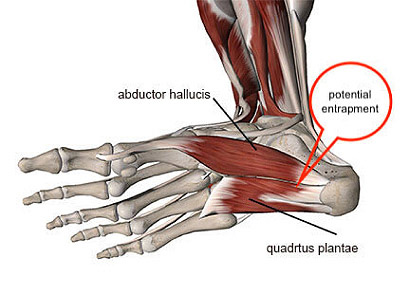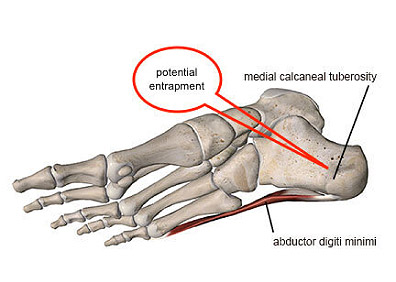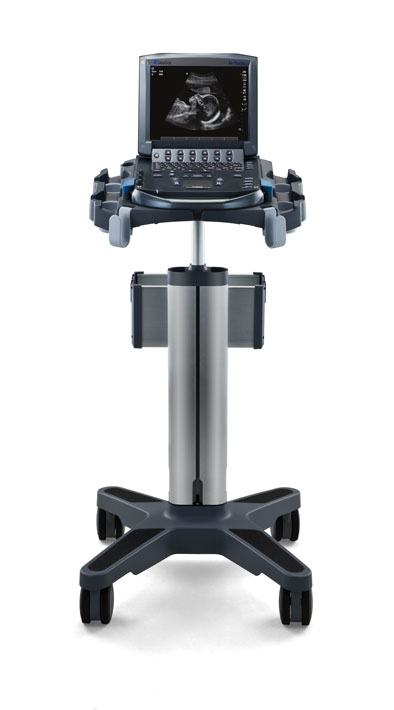Home > Conditions Treated > Baxter’s Entrapment


Baxter’s Entrapment (or Baxter’s Neuropathy) may account for up to 20% of heel pain cases although it is frequently misdiagnosed. If it is misdiagnosed as Plantar Fasciitis then traditional Plantar Fasciitis treatments could be ineffective, or actually make the condition worse. Baxter’s Entrapment is an entrapment (or compression) of the Inferior Calcaneal Nerve (known as Baxter’s nerve) just under the base of the arch of the foot.
Risk Factors include Plantar Fasciitis, obesity, flat foot, foot hyperpronation, muscular enlargement (such as in athletes) and bone spur (specifically a plantar calcaneal spur.)
It is very difficult to identify Baxter’s Entrapment by physical examination. Frequently, it is painful to feel along the arch on the bottom surface of the foot. In some cases it will be especially painful to feel along the outer aspect of the bottom of the foot. It may also be painful along the inner arch where the nerve is likely to be entrapped.
An ultrasound guided local anesthetic diagnostic test or an MRI is required for diagnosis. An ultrasound guided local anesthetic diagnostic test is when a local anesthetic agent (like lidocaine) is injected near the origin of the Medial Calcaneal Nerve using ultrasound guidance. If the trial injection results in a significant decrease in pain, then Baxter’s Entrapment is likely to be present.
MRI is valuable in demonstrating muscular changes associated with denervation. When motor fibers to the muscle (the abductor digiti minimi muscle) are damaged, the muscle will degenerate and fatty edema can build up. The fatty infiltration is visible on MRI. MRI is also helpful in excluding other diagnoses (such as fracture, neoplasia, fasciitis).
Ultrasound guided radiofrequency ablation for Baxter’s Entrapment can produce long-term pain relief and has high patient satisfaction. It is a minimally invasive intervention that uses radiofrequency sound waves to heat the affected sensory nerve to 90 degrees Celsius. Proteins in the nerve are broken down at this temperature and the targeted section of the nerve is destroyed.
This prevents the nerve fibers from transmitting pain from that area. Additionally, radiofrequency ablation may cause the formation of new blood vessels, thereby accelerating the healing process.
At our center, this minimally invasive procedure is performed under local anesthesia and with ultrasound guidance to ensure an accurate targeting.

Although Orthobiologic Cell Therapy is considered by some people to be experimental, various research studies show that some marrow aspirate concentrate and platelet rich plasma injections may provide excellent relief from joint and musculoskeletal pain and ongoing inflammation.
600 Worcester Rd, Ste 301,
Framingham, MA 01702
This information is for educational purposes only and is NOT intended to replace the care or advice given by your physician. Always seek the advice of your physician or other qualified health provider before starting any new treatment or with any questions you may have regarding a medical condition. For more information see our Medical Disclaimer.